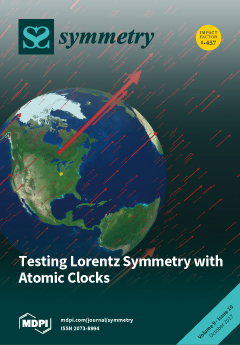Open AccessFeature PaperArticle
Occurrence of Chiral Bioactive Compounds in the Aquatic Environment: A Review
by
Cláudia Ribeiro 1,2,† , Ana Rita Ribeiro 3,*,†, Alexandra S. Maia 1,4 and Maria Elizabeth Tiritan 1,2,5
, Ana Rita Ribeiro 3,*,†, Alexandra S. Maia 1,4 and Maria Elizabeth Tiritan 1,2,5
1
CESPU, Instituto de Investigação e Formação Avançada em Ciências e Tecnologias da Saúde, Rua Central de Gandra, 1317, 4585-116 Gandra PRD, Portugal
2
Centro Interdisciplinar de Investigação Marinha e Ambiental (CIIMAR/CIMAR), Universidade do Porto, Rua dos Bragas 289, 4050-123 Porto, Portugal
3
Laboratory of Separation and Reaction Engineering—Laboratory of Catalysis and Materials (LSRE-LCM), Faculdade de Engenharia, Universidade do Porto, Rua Dr. Roberto Frias s/n, 4200-465 Porto, Portugal
4
Universidade Católica Portuguesa, CBQF—Centro de Biotecnologia e Química Fina—Laboratório Associado, Escola Superior de Biotecnologia, Rua Arquiteto Lobão Vital, Apartado 2511, 4202-401 Porto, Portugal
5
Laboratório de Química Orgânica e Farmacêutica, Departamento de Ciências Químicas, Faculdade de Farmácia da Universidade do Porto, Rua de Jorge Viterbo Ferreira, 228, 4050-313 Porto, Portugal
†
Joint 1st Authors.
Cited by 35 | Viewed by 6350
Abstract
In recent decades, the presence of micropollutants in the environment has been extensively studied due to their high frequency of occurrence, persistence and possible adverse effects to exposed organisms. Concerning chiral micropollutants in the environment, enantiomers are frequently ignored and enantiomeric composition often
[...] Read more.
In recent decades, the presence of micropollutants in the environment has been extensively studied due to their high frequency of occurrence, persistence and possible adverse effects to exposed organisms. Concerning chiral micropollutants in the environment, enantiomers are frequently ignored and enantiomeric composition often neglected. However, enantioselective toxicity is well recognized, highlighting the need to include enantioselectivity in environmental risk assessment. Additionally, the information about enantiomeric fraction (EF) is crucial since it gives insights about: (i) environmental fate (i.e., occurrence, distribution, removal processes and (bio)degradation); (ii) illicit discharges; (iii) consumption pattern (e.g., illicit drugs, pharmaceuticals used as recreational drugs, illicit use of pesticides); and (iv) enantioselective toxicological effects. Thus, the purpose of this paper is to provide a comprehensive review about the enantioselective occurrence of chiral bioactive compounds in aquatic environmental matrices. These include pharmaceuticals, illicit drugs, pesticides, polychlorinated biphenyls (PCBs) and polycyclic musks (PCMs). Most frequently analytical methods used for separation of enantiomers were liquid chromatography and gas chromatography methodologies using both indirect (enantiomerically pure derivatizing reagents) and direct methods (chiral stationary phases). The occurrence of these chiral micropollutants in the environment is reviewed and future challenges are outlined.
Full article
►▼
Show Figures





